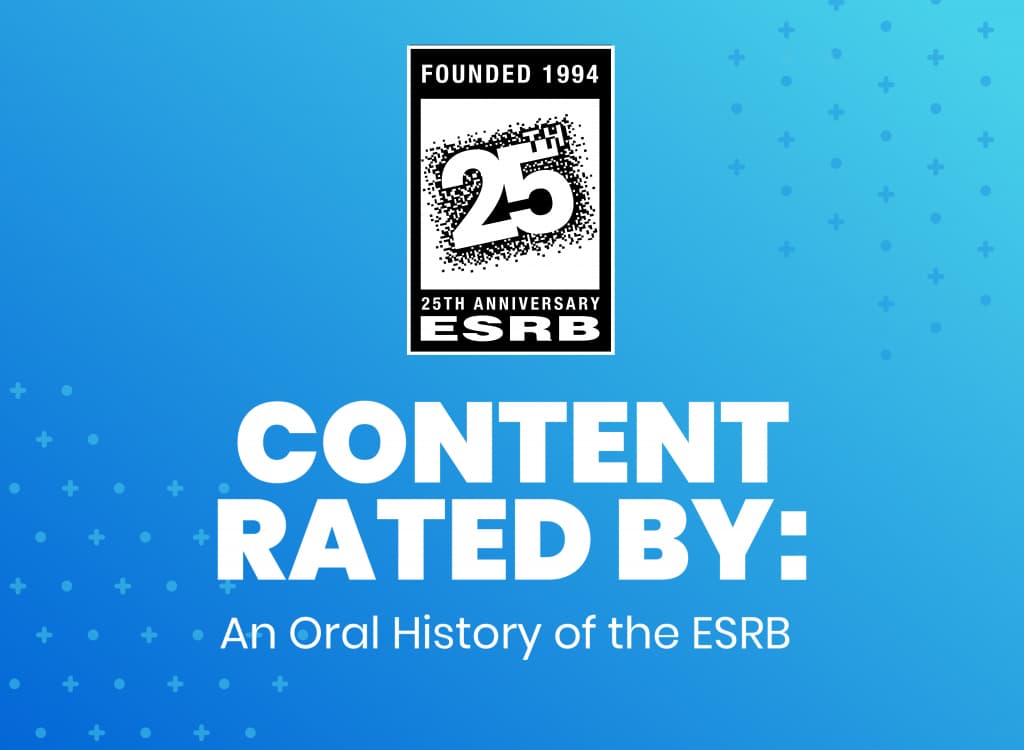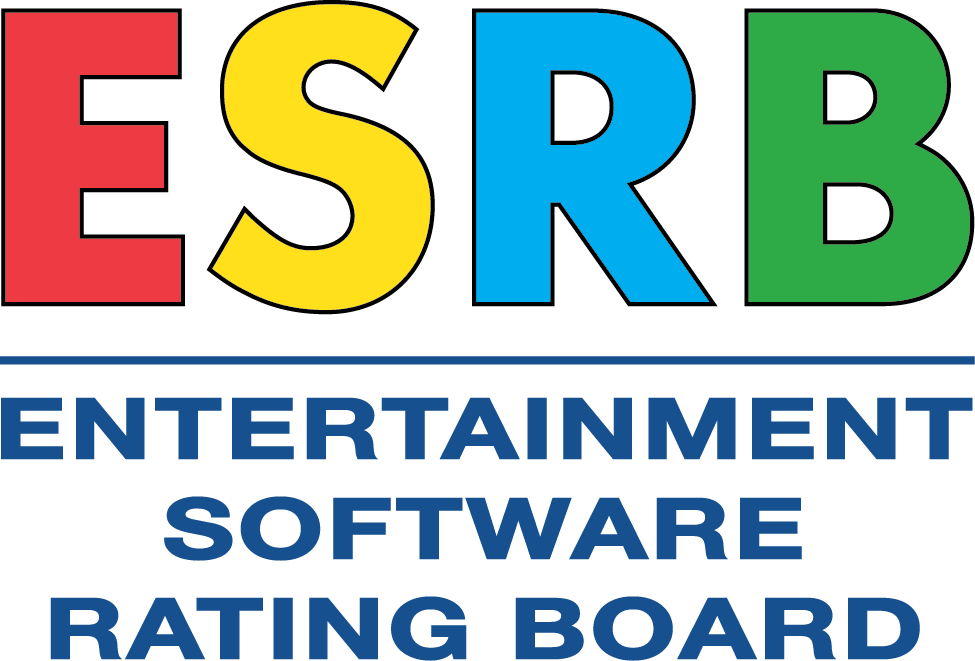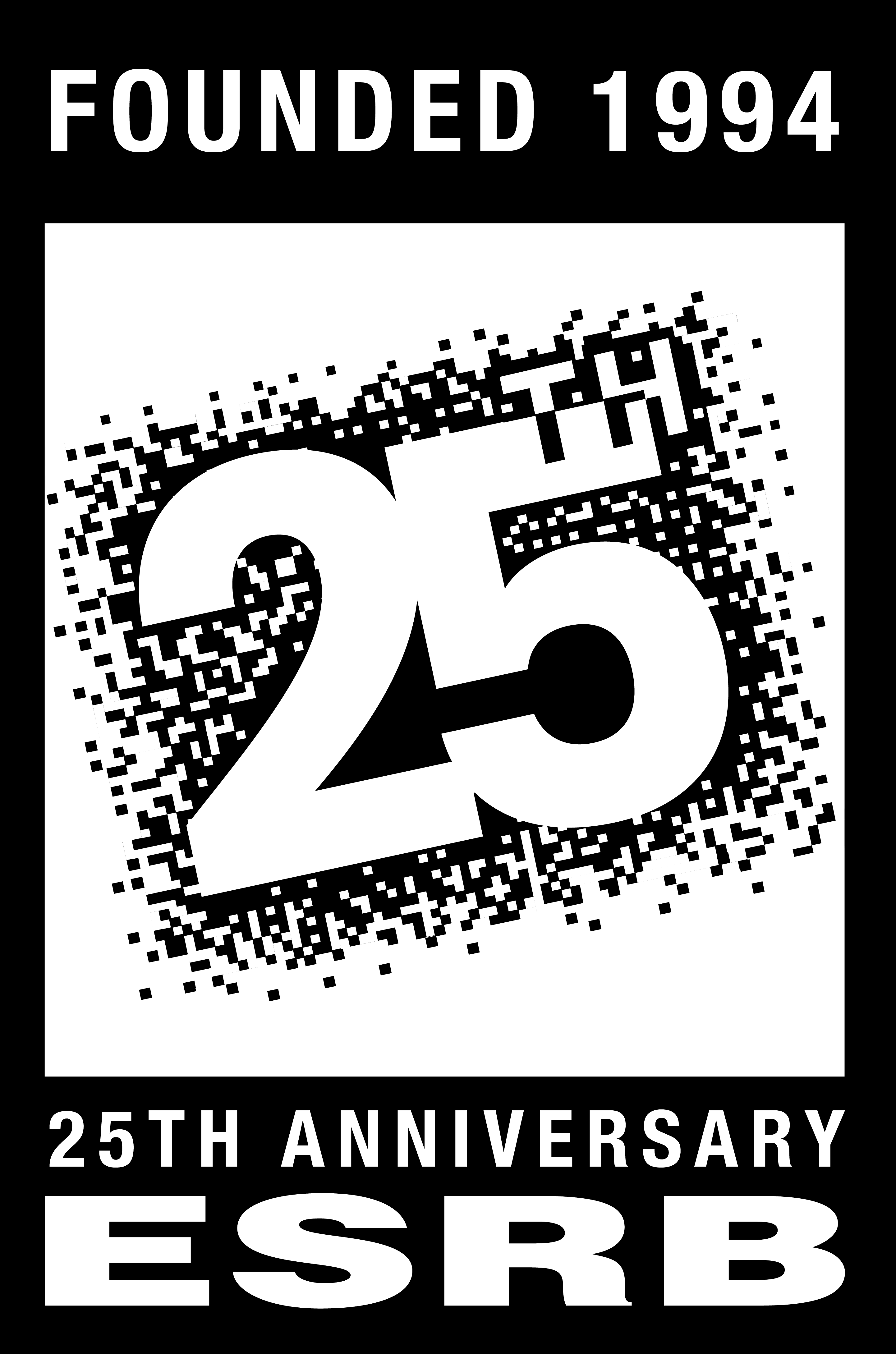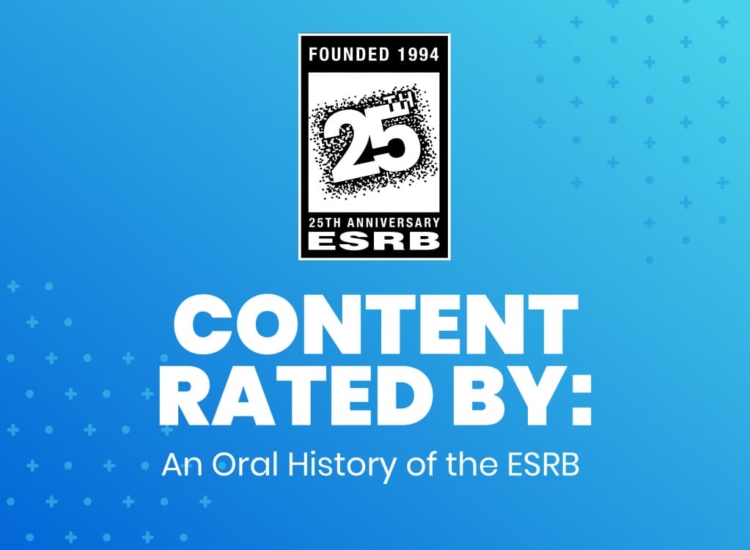Part 8: Twenty-five Years Later…

To help commemorate its 25th anniversary, the Entertainment Software Rating Board (ESRB) reached out to Blake J. Harris, the best-selling author of Console Wars: Sega, Nintendo, and the Battle That Defined a Generation and The History of the Future: Oculus, Facebook and the Revolution That Swept Virtual Reality to document the behind-the-scenes origins of the rating system for video games and how it has evolved over the past quarter century. Content Rated By: An Oral History of the ESRB provides eyewitness accounts from the key people involved in the ESRB’s creation and its development into one of the country’s finest examples of industry self-regulation.
PART 8: Twenty-five Years Later…
In December 1993, Sega and Nintendo were summoned to Capitol Hill for the first in a series of contentious congressional hearings on the issue of violence in video games. At stake? Government regulation, content censorship and the trajectory of a booming new industry.
Four months after that first hearing, the game industry’s chief rivals were able to set aside their differences (temporarily, at least) and join forces with an assortment of allies and foes to form a trade association representing the game industry as a whole. Five months later, as a result of that cooperation, the ESRB was officially formed. And now, here we are, twenty-five years later…
TOM KALINSKE (SEGA): Wow, has it really been that long? I’ll tell you what, though: at the time, going through all of that, it was a real challenge. There was a lot on the line, and a lot of aggressive companies unwilling to give an inch (us included). But, in retrospect, I’m glad it all happened like that. Ultimately, it was a good thing.
HOWARD LINCOLN (NINTENDO): As I think back at it now, it was the best thing that ever happened—forming not just the Entertainment Software Rating Board but also forming the industry association… and then, most importantly, getting out of the CES show and into our own trade show, E3, which brought the industry together and again validated that this was a real industry.
RILEY RUSSELL (SONY): Sometimes it’s about doing what’s right—not what’s legally necessary, not what’s going to make a lot of money for your company, but just what’s actually right.
JACK HEISTAND (EA): What am I most proud of, looking back? Well, having a vision. And having that vision come to fruition. Having the support of everybody in the industry to realize that vision. And having someone to partner with who had enormous integrity like Joe Lieberman.

GAIL MARKELS (ESA): In the early days the game industry was like the wild west [laughing]. It was uncharted territory. There was a huge difference in working for an older, more established and well-respected industry, and a newer industry that was brash and very lean. Our colleagues at the MPAA and the RIAA were enormously helpful on legislative issues. We referred to ourselves as the “Three Spinners” on legislative issues. We worked together, as none of the three content industries wanted to be regulated by the government. In my experience, a strong well-respected rating system that is enforced by retailers is the best defense against government regulation. We faced a lot of challenges in the early days and were enormously successful with a tiny staff and small budget. It was a great job and I’m really proud of the work we did.
DONA FRASER (ESRB): The irony is that if you look back at the graphics of the original Mortal Kombat, my god! What were we really fighting about!? It was cartoonish, at best, in comparison to what we have today. I mean, by the time I got to the ESRB and I’d walk around the offices there and see people playing games, sometimes I couldn’t tell if it was real life or a game!
MIKE GALLAGHER (ESA): The unique success of the ESRB is testimony to a deep and sustained industry commitment coupled with the talent and dedication of a great ESRB team. The ESRB’s constant evolution to match the dynamic nature of the video game industry for over a quarter century is a fantastic self-regulatory success story.
ELIOT MIZRACHI (ESRB): The people I worked with at the ESRB were (and are) amazing people…I learned a lot. And to have been involved with the stuff that I was involved with there…it was just an amazing experience.
DOUG LOWENSTEIN (ESA): Creating the ESRB is one of the industry’s singular achievements. I don’t deserve a lot of credit for creating it; I had input but Dr. Pober created the basic concept of the ratings board; and then Pat and her team have built on that over the years. But to whatever degree I played a role in its creation…it’s something I’ll always be proud of.
ARTHUR POBER (ESRB): I loved what I did there and it’s nice to see that the system still exists after 25 years. I’m very proud of the work we did and the team that I put together. We were able to regulate an industry that was initially made up of loose cowboys to one that was considered [and is still considered!] one of the most responsible industries in the world today.
DOUG LOWENSTEIN (ESA): To me, the most meaningful legacy is being part of the battle that eventually led the Supreme Court to rule 7-2 that video games are a protected form of artistic expression and are fully covered by the First Amendment. That’s something we fought for from the very beginning.
RANDY WALKER (ESRB): I’m a big believer in the First Amendment rights of this country. And to have whatever role that I have personally in this—and that our organization had in this—in protecting those creative freedoms for the industry…I can’t overstate the importance to me on a personal level. Because let’s not forget—and this is something that I see firsthand in my line of work—there are a lot of countries around the world that don’t have the same creative protections and freedoms that we do from the First Amendment. So having a role in protecting the artistic freedom for all the creative voices in this industry is incredibly important to me.
DOUG LOWENSTEIN (ESA): Beyond that First Amendment protection, the second thing I’m most proud of would be the team we built. The quality of the team, the commitment of the team, and the effectiveness of the team. And that very much includes Pat, who is one of the best hires I ever made in my entire career.
DON JAMES (NINTENDO): Pat runs a really tight ship. She’s done a great job. They are objective; they have really good criteria for how they assign the ratings; they have a really good enforcement policy; and they work hard to partner with members of the industry.
PAT VANCE (ESRB): Looking back on the sixteen…almost seventeen years that I’ve been here, there are so many highlights: IARC, the ESRB Retail Council, and then, of course, I’m also really proud of how we’ve been able to evolve as the industry evolves. This is a very fast-paced industry—and being able to adapt when required is something we’ve done repeatedly. But if I had to pick the one thing that I’m most proud of [takes a moment], honestly, it’s just the actual work itself. We do it really well. At the end of the day, we don’t want to be making decisions for parents. What we want is for parents to use the information we provide to make their own decisions, however, they see fit for their own families. And that really differs family to family, parent to parent. When we hear from parents things like, “Using the ratings gives me confidence to make the right decision for my kid”—well, what more is there to say? That right there, that’s what it’s all about. It just makes me very proud of what we do.

This marks the end of Content Rated By: An Oral History of the ESRB. All eight parts can be found in the ESRB About section.
Blake J. Harris is the best-selling author of Console Wars: Sega, Nintendo and the Battle that Defined a Generation, which is currently being adapted for television by Legendary Entertainment.
